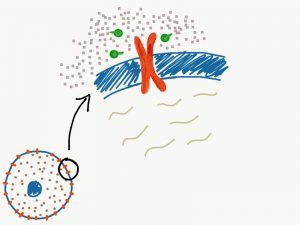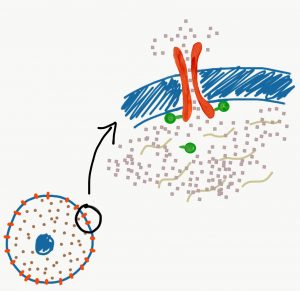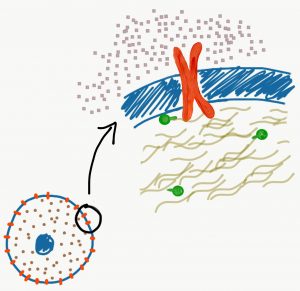We think of excess sugar when we think of diabetes. But did you know that excess sugar is a symptom of diabetes and not the cause? If someone comes to me with high fever and I find that they have typhoid, it is no point trying to treat their fever, rather than address the infection that is causing the high fever. Same with diabetes; treat the underlying cause of diabetes and it will go away. Let’s understand this a little better.
Diabetes occurs when our bodies cannot process sugars. Think of insulin as a key to let the sugar into our cells. This can happen in two ways. The first, called type I diabetes, happens when the key – insulin – is missing. If the body cannot produce insulin, we have very few choices left. For this kind, we physicians have very little to offer, except for an external source of insulin.
In the second one, called type II diabetes, our body gets used to excess insulin and cannot process sugar. Type II diabetes is not only treatable, but completely reversible! I have had many of my patients stop their diabetes medication. To understand how we do that, we need to understand some basic biology. As you might recall, all our cells need sugar as an energy source. Sugar (in the form of glucose) is the currency of the body. When we have a meal, most of it is converted to glucose. At the same time, our pancreas produce insulin. Both these chemicals travel though our bloodstream and around our cells where insulin helps the glucose get inside the cell where it is used up.

FIGURE 1
Look at FIGURE 1. At the bottom left is is a representation of a cell in our body and the magnified area is its outer boundary (or cell membrane) represented in blue. The stuff below the blue boundary is inside the cell membrane and stuff above, is outside. In a normal cell, there is some amount of fat, represented by the grey wavy streaks. When glucose (small grey squares) and insulin (green dots) arrive outside the cell, they wait till the insulin gets inside (using a mechanism not shown here). The large red marks denote entry points or passageways for glucose into the cell. Normally, these tube-like tunnels or passageways, are closed.

FIGURE 2
This is an oversimplification, but insulin helps open up these tubes so that sugar can get inside. In FIGURE 2, you can see how insulin acts like a key to open the ports and allow the glucose to come inside.

FIGURE 3
For some reason, if the cell gets gummed up, (see FIGURE 3), it becomes insulin resistant. When this happens, glucose cannot get into our cells and accumulates in our bloodstream. The primary reason for the gumming up is intracellular lipid – a fancy name for fat. So, in the presence of fat inside the cells, insulin cannot do its job well and we develop what is known as diabetes.
The treatment for type II diabetes is to not only treat the symptoms (high sugar) but also to address the root cause – excess fat in the cells. Treating excess sugar can be achieved by way of reducing sugar intake and also using medication. Treating excess fat in the cells is best done by changing the patient’s nutrition. For example, we might coach the patient various ways to reduce the amount of fat they eat, so that they don’t keep storing more and more of it.
At the same time, we help them find ways to burn off the already stored fats. This can be done by reducing your calorie intake so that your body automatically taps into your stored reserves. A way to speed up the fat loss is by burning it off; do cardio exercises. A minimum of 20 minutes of cardio exercises (by that I mean, it should be hard for you to talk when working out) two to three times a week should help. There is no need to panic, you can do this by a quick brisk walk!
If you think you have pre-diabetes (some blood tests can show you this) or diabetes, consult a physician that will help you attend to the root cause of diabetes rather than treat the symptoms (excess sugar) alone. Think of the fat sitting in your cells as the “Infection” – have that treated!
 Written by Jennifer Prabhu, MD, MT (ASCP), FAAP, FACP
Written by Jennifer Prabhu, MD, MT (ASCP), FAAP, FACP
Read more aricles by Jennifer Prabhu
Jennifer Prabhu is a Medical Doctor specialising in Internal Medicine & Pediatrics. She earned them both simultaneously from the University of Maryland Medical Center. She has been awarded the American Society for Clinical Pathology Honor Award, Honors in Internal Medicine and Surgical Clerkships and Honors as Outstanding Primary Care Physician by the University of Maryland, Department of Pediatrics. She has taught many doctors, has authored numerous scientific articles and has worked in prestigious organizations such as the Johns Hopkins and the world’s largest National Institutes of Health.

This blog has inspired me to try energy healing! Do you also provide chakra balancing and guided meditation sessions?